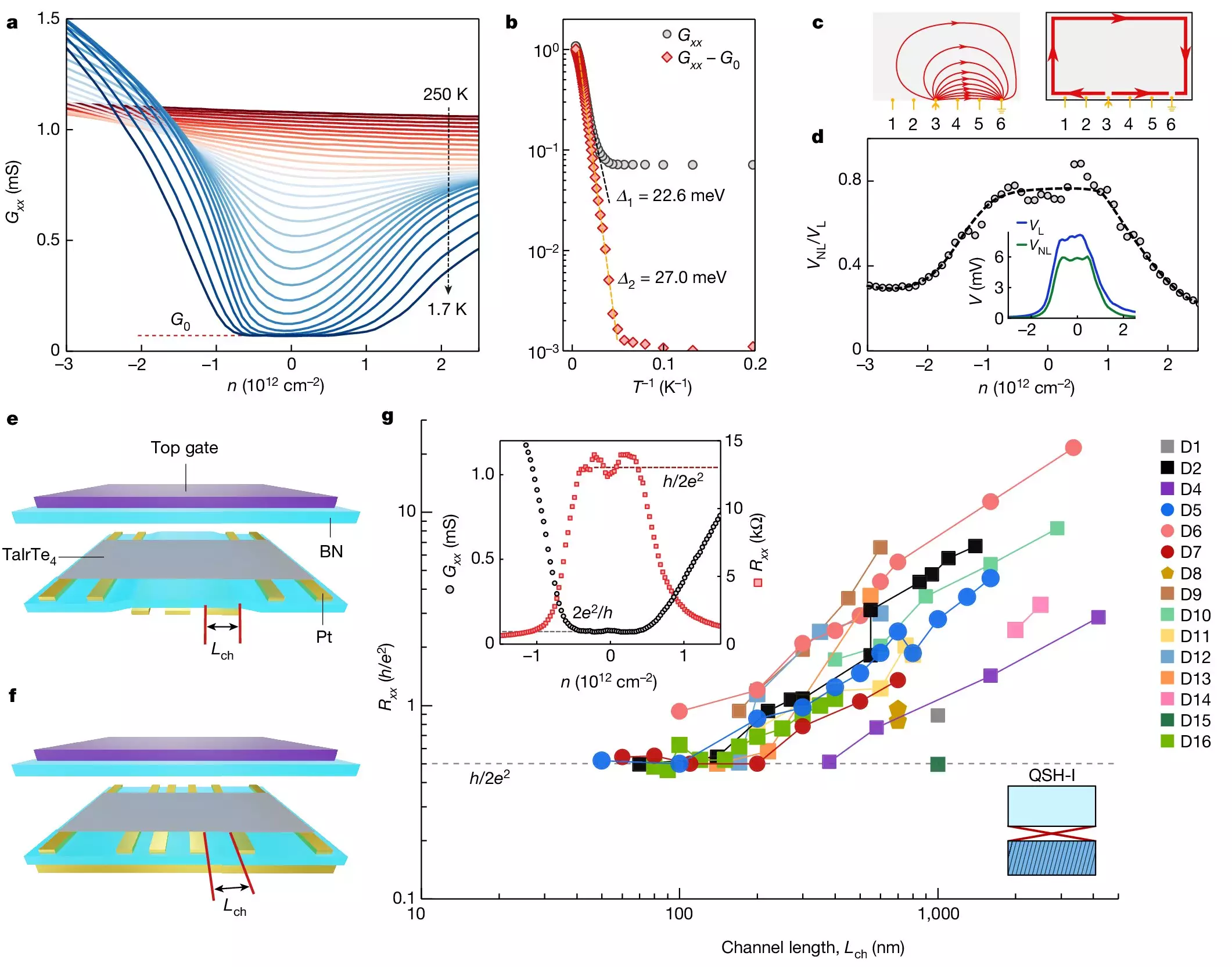Recent research led by a team of scientists from Boston College has uncovered the existence of dual topological phases in an intrinsic monolayer crystal. This groundbreaking discovery sheds light on new and unconventional properties found in quantum materials. These dual topological insulating states introduce a fresh approach to creating topological flat minibands through electron interactions, showcasing the potential for exploring exotic quantum phases and electromagnetism.
The study focuses on exceptionally thin, two-dimensional layers of TaIrTe4, a crystalline material composed of tantalum, iridium, and tellurium. These layers, with a thickness of less than 1 nanometer, exhibit unique properties that challenge conventional theories. Through careful experimentation and theoretical analysis, the team was able to identify not one but two distinct topological insulating states within TaIrTe4, a phenomenon that goes beyond existing predictions in the field.
To investigate the electronic properties of TaIrTe4, the research team employed advanced nanofabrication techniques, including photolithography and electron beam lithography, to create nano-sized electrical contacts on the ultra-thin material. By applying gate voltages and manipulating specific parameters, the researchers observed the transition between the two topological states, where the material displayed zero electrical conductivity in its interior while maintaining conductive boundaries. This behavior, known as a quantum spin Hall insulator, has significant implications for the development of energy-efficient electronic devices.
One of the most surprising outcomes of the study was the unexpected behavior exhibited by TaIrTe4 when subjected to varying electron concentrations. While initially, the addition of electrons led to increased conductivity, beyond a certain threshold, the material reverted to an insulating state with conduction occurring solely at the boundaries. This abrupt transition to a second topological insulating phase challenged the researchers’ initial assumptions and highlighted the complexity of quantum materials.
Moving forward, the team plans to collaborate with experts in specialized techniques, such as nanoscale imaging probes, to further investigate the unusual properties of TaIrTe4. Additionally, efforts will be made to enhance the quality of the material and explore the creation of heterostructures based on this new discovery. By refining the understanding of dual topological phases in quantum materials, researchers aim to unlock even more intriguing physical phenomena and pave the way for future advancements in the field.
The identification of dual topological insulating states in TaIrTe4 represents a significant advancement in the field of quantum materials. By pushing the boundaries of traditional theories and embracing unexpected findings, scientists have opened up new avenues for exploring the fascinating world of quantum physics. The journey to unravel the mysteries of dual topological phases continues, promising exciting possibilities for the future of electronic devices and quantum technology.


Leave a Reply